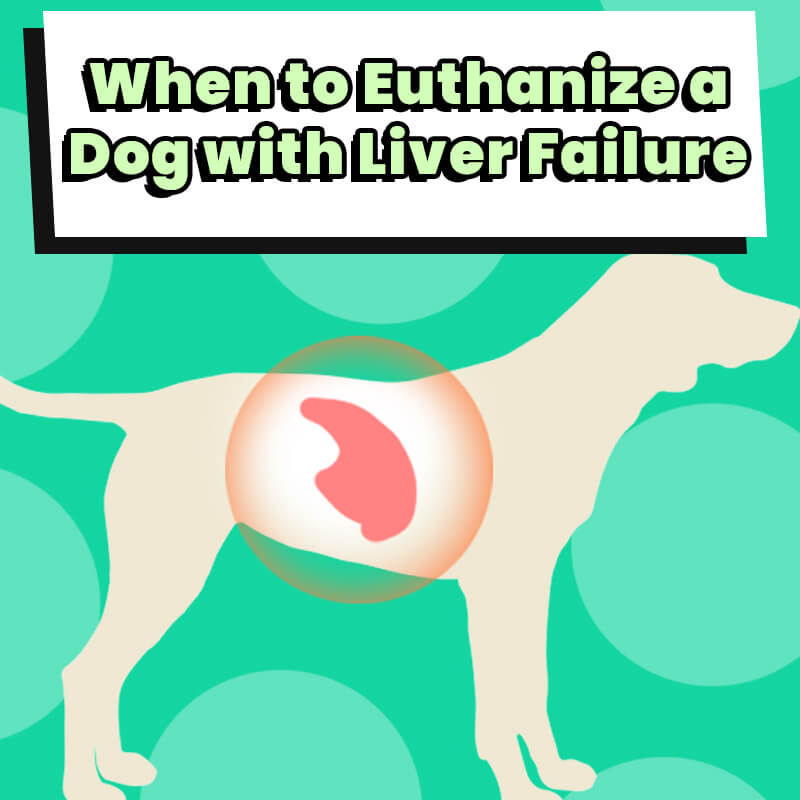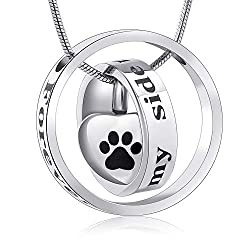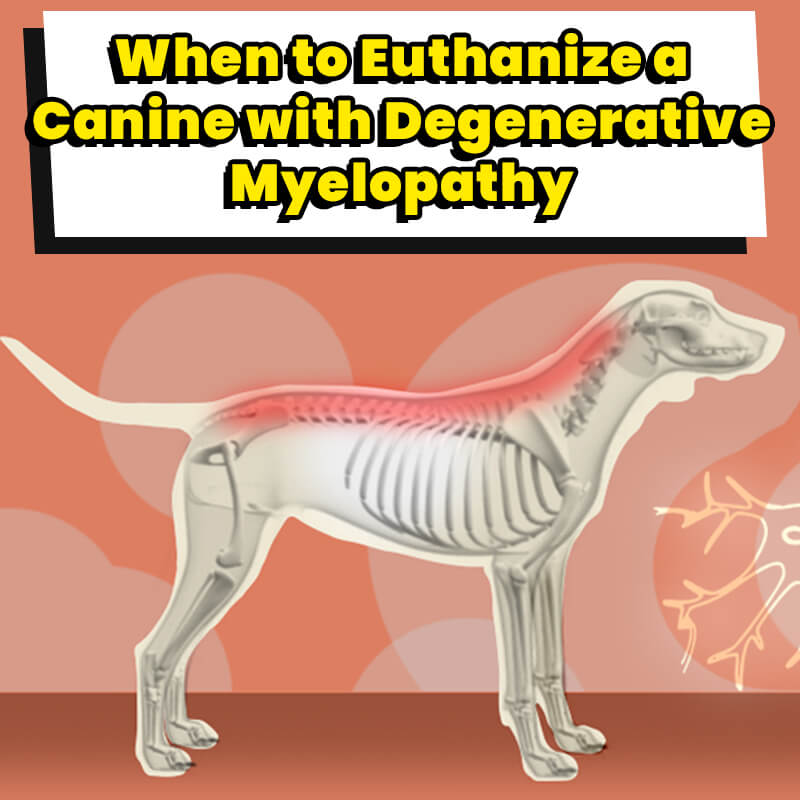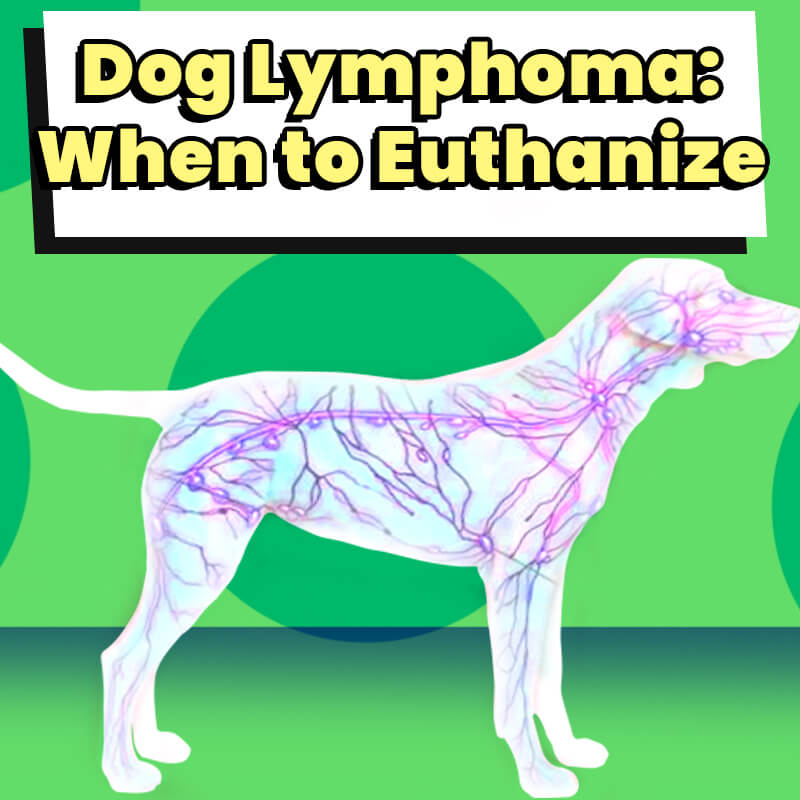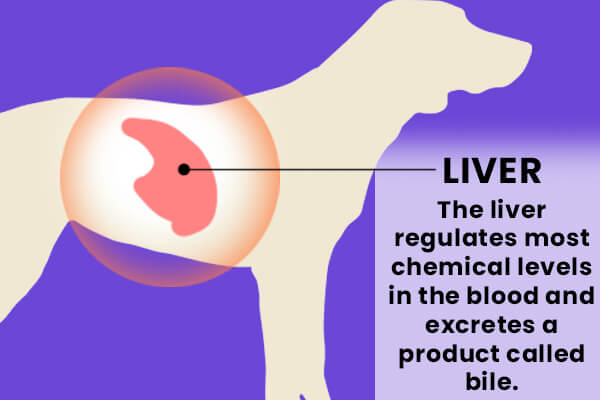
Knowing when to euthanize a dog with liver failure can be tricky. Like all chronic diseases such as liver disease, early detection is critical. An early diagnosis can help you avoid needing to euthanize your dog so keep an eye out for common early symptoms of liver failure.
Euthanization can be a deeply personal and emotional decision that can easily overwhelm someone. Making the humane decision to spare your canine companion from suffering should not be viewed negatively.
Some of the symptoms common to early liver disease mimic those of other diseases common in dogs, check out our article on canine degenerative myelopathy: when to euthanize for more information and to rule out other possible conditions.
Table of Contents
Helping you decide if you should euthanize your dog with liver failure
Consider contacting your veterinarian if you are worried your dog is suffering due to liver failure, together with your vet you can make a decision about euthanization. Don’t make any hasty decisions, euthanization may not be the best option especially if treatment options are available for your dog. Seeking the help of qualified professionals can really take the stress out of the decision and give you peace of mind.

Total Time Needed :
45
Minutes
Total Cost:
65
USD
Required Tools:
Things Needed?
Steps to deciding if you should euthanize your dog with liver failure

Symptoms of liver failure in dogs
As a dog owner, you’ll want to keep an eye out for some common signs your dog may not be feeling their best, with a disease like liver failure early detection is key. According to PetMD If you notice any of the following symptoms you should get your furry friend checked out at the vet’s office.
- weight loss and low appetite
- Diarrhea and vomiting (with or without blood)
- Constant thirst and increased urination
- Confusion and difficulty walking
- General weakness and lethargy
- Jaundice (yellowing of eyes and skin)
- Seizures & Confusion
- Fluid buildup in the body (especially around the stomach)
Depending on what stage of liver failure your dog may have a number of options that do not include euthanization. Liver failure is a lifelong condition that will likely need to be monitored for the duration of your dog’s life. Things like changes and diet and special medications go a long way to treating your dog’s liver condition.
DON’T MISS: When to Euthanize a Dog with Kidney Failure or Disease
Early Stage Liver Disease
This is a critical stage, if you can identify liver disease in your dog early enough you can control it with simple changes to your dog’s diet. There are a couple of things to look out for during this stage of the disease, mainly lethargy and diarrhea, and vomiting.
Vomiting and diarrhea in dogs can happen for a number of reasons and normally is not cause for panic, however, you should be concerned if symptoms persist for over a week or two.
Any time your dog has unusual symptoms or is acting strangely for extended periods of time you should consider making an appointment at your veterinarian.
Best case it’s nothing and you get some peace of mind, worst case you catch something super early and save your dog’s life.
Mid Stage Liver Failure
If you missed the early signs of liver failure in your dog then the disease is likely to proceed to the next phase. During the middle stage of liver failure, your dog will begin to show physical symptoms of the disorder.
The Liver stops functioning properly and fails at filtering toxins out of the dog body. At this point, it’s common for jaundice to set it which is characterized by a yellowing of the eyes and skin.
Other symptoms such as your dog looking “puffy” may occur, typically in the abdomen. This is due to fluid buildup in the dog’s organs and blood vessels.
During mid-stage liver failure your dog can still live a reasonably comfortable life if you catch the symptoms early on. With diet changes and medication, your dog’s liver disease progression can be slowed.
It might also help to get a comfortable bed to sleep and relax on. We highly recommend a bed that reduces the stress on their stomach or abdomen area.
Late Stage Liver Failure
Knowing when to euthanize a dog with liver failure normally revolves around the quality of life concerns, if you dog reaches the later stages of liver failure euthanization becomes a real consideration.
During the final stages of liver failure, your dog’s brain will start being affected by the disease. With the body full of toxins that should have been filtered by your dog’s now failing liver your dog will experience a number of uncomfortable symptoms.
As toxins flow through the bloodstream to your dog’s brain they will begin losing control of bodily function. You may notice them acting strangely and appear to be walking aimlessly around your home. Things like seizures and other neurological issues will be noticeable.
At this stage, it would be appropriate to consult with your vet directly and discuss euthanizing your dog. Although it is a hard decision to make, the humane choice here in most cases will be to put the dog down and save them from suffering.
CHECK OUT: When to Euthanize a Dog with Hemangiosarcoma
How Long Does Dog Live with Liver Failure?
There are different types of liver disease in dogs with some showing mild while others exhibit severe symptoms. Dogs diagnosed with chronic hepatitis can live up to 2 to 3 years while dogs with liver cancer can live up to 3 to 6 months after diagnosis.
Is Liver Failure in Dogs Painful?
Yes, liver failure, especially during the end stage is painful for dogs. It is during this last stage that the symptoms begin to worsen.
What Are The Last Days Of Liver Failure Like?
The affected dog will show signs of pain and discomfort. Your K9 companion may be unresponsive to your calls and will show no interest in eating and drinking.
These are the reasons why veterinarians recommend euthanizing dogs to relieve them of the excruciating pains that are associated with end-stage of liver failure.
ALSO READ: Dog Lymphoma (When to Euthanize)
When To Euthanize a Dog with Liver Failure?
If your dog is already suffering from consistent vomiting and diarrhea, yellowing of the skin, gums, and eyes, and seizures, then, it’s time to end the suffering and allow your dog to cross the rainbow bridge.
Deciding if you should euthanize your dog
Deciding to euthanize a dog with liver failure can be tough and there will be tons of thoughts racing through your head while you grapple with the idea. It’s a good idea to get your veterinarian’s option on the matter regardless of what you think you should do.
Before making any decision, getting a second opinion from a qualified veterinarian is a must. Not only do vets have a wealth of experience dealing with diseases like kidney failure but they also have tools to help diagnose and treat your dog. There may be new treatment options that you are not aware of that your vet can suggest, you never know!
Is Euthanasia Painful For Dogs?
No, euthanasia won’t cause any pain to dogs.
A catheter will be inserted into a dog’s vein to quickly deliver the euthanasia solution. This solution is the same as general anesthesia which provides loss of consciousness and sensation from pain.
After injecting the solution, the lungs and the heart stop functioning right away.
Thus, euthanasia is pain-free and compassionate way of ending the physical sufferings of a very sick dog.
Telling your family about euthanization
Your dog is part of your family and depending on the size of your family you may need to have a difficult discussion with kids or loved ones. Kids can take putting down a dog pretty hard, especially if they have grown up with your dog their entire lives.
There are a number of ways to help your kids cope with the loss of a dog. There is a wealth of information about the topic which can be found in books available online. Consider checking out sites like PyschologyToday for helpful tips on talking to children about losing a pet.
Try to set time aside for everyone to say their goodbyes to your dog. Saying goodbye can help people get a sense of closure especially when dealing with the passing of your pooch. Explain to your family the situation and set a date for the euthanization so everyone knows how much time they have with your dog.
READ NEXT: What is the Right Time to Euthanize a Dog with Osteosarcoma?
Remembering your dog
After your euthanization procedure your vet will typically suggest either a traditional burial (at a pet cemetery or in your yard if your town allows it) or cremation.
People often choose to cremate their beloved companions in order to keep their remains in the house within an urn. There are many urns available online with customization to make them the perfect resting place for your dog
Pet Insurance
Depending on your situation euthanization may be the only option if treatment for your dog is more than you can afford. This is where pet insurance comes in. Getting pet insurance before you need it can go a long way to helping you pay for your dog’s treatment.
Private pet insurance has been growing over the last couple of years, don’t wait until your pet needs insurance to get it. Signing your pet up to be covered early can help keep monthly payments low and give you peace of mind.
Conclusion
Deciding when to euthanize your dog can be a very difficult decision to make. Sometimes the most humane decision is one that ends your dog’s suffering. Certain illnesses are terminal with a very low likelihood of your dog pulling through, always consult your veterinarian about the options you have and whether euthanizing your dog with advanced liver failure is the right choice to make.
Related Questions
Some general signs of a dog dying from liver failure include vomiting, diarrhea, constantly thirsty every few minutes and as a result, urinating frequently, difficulty walking, weight loss, lack of energy, and confusion.
Some specific symptoms of a dog dying from liver failure include seizures, fever, jaundice, blood clotting issues, stomach ulceration, loss of appetite, liver size changing, fluid buildup in the body (especially around the stomach and the abdomen), and gastrointestinal bleeding.
A dog with liver failure or liver cancer can expect to live for about half a year or six months. If your canine friends undergo surgery, their life expectancy can increase to one year.
It also depends on the type of liver cancer your pooch has. If your pup has nodular liver cancer or diffuse liver cancer, then he or she may not have long to live.
If there’s evidence that cancer has spread to the lungs or to the abdominal organs, then your furry friends can expect to live for only a few weeks.
If you suspect your dog has liver failure or liver cancer, be sure to monitor for any new changes and stay in constant communication with your vet. This way, your vet can manage your pup’s symptoms.
DISCLAIMER: THIS WEBSITE DOES NOT PROVIDE MEDICAL ADVICE
The information, including but not limited to, text, graphics, images and other material contained on this website are for informational purposes only. No material on this site is intended to be a substitute for professional veterinary advice, diagnosis, or treatment. Always seek the advice of your veterinarian or other qualified health care provider with any questions you may have regarding a medical condition.

With over five years of specialized experience as an animal writer, my expertise lies in dog nutrition, health, behavior, grooming, and training. I am dedicated to delivering helpful and informative content that caters to the well-being of our furry friends. My primary goal is to empower pet owners with knowledge and ensure our canine companions thrive in health and happiness. In my free time, I love volunteering at local dog rescue centers.
